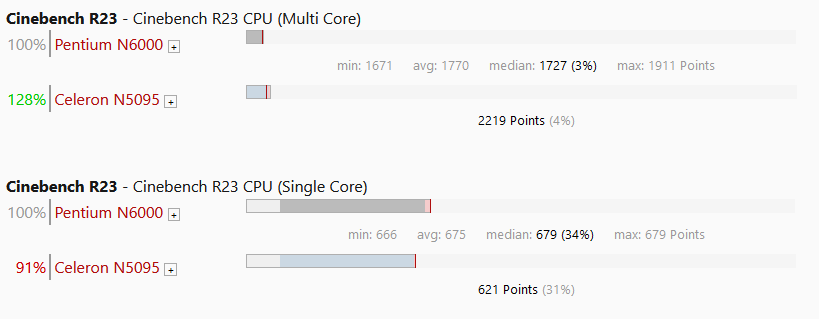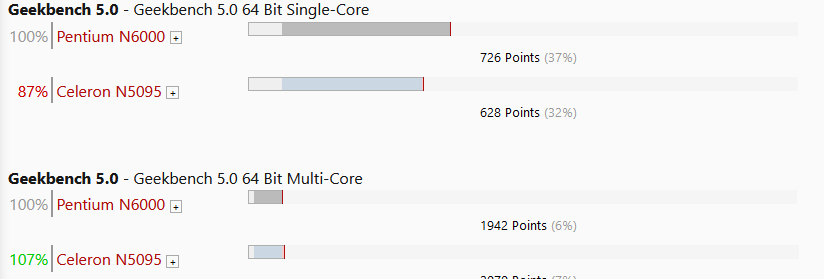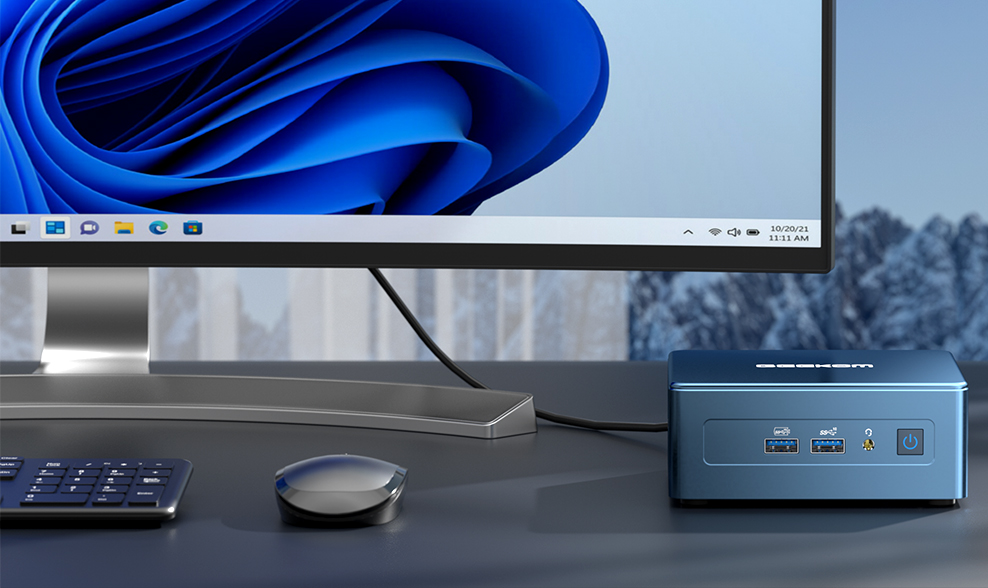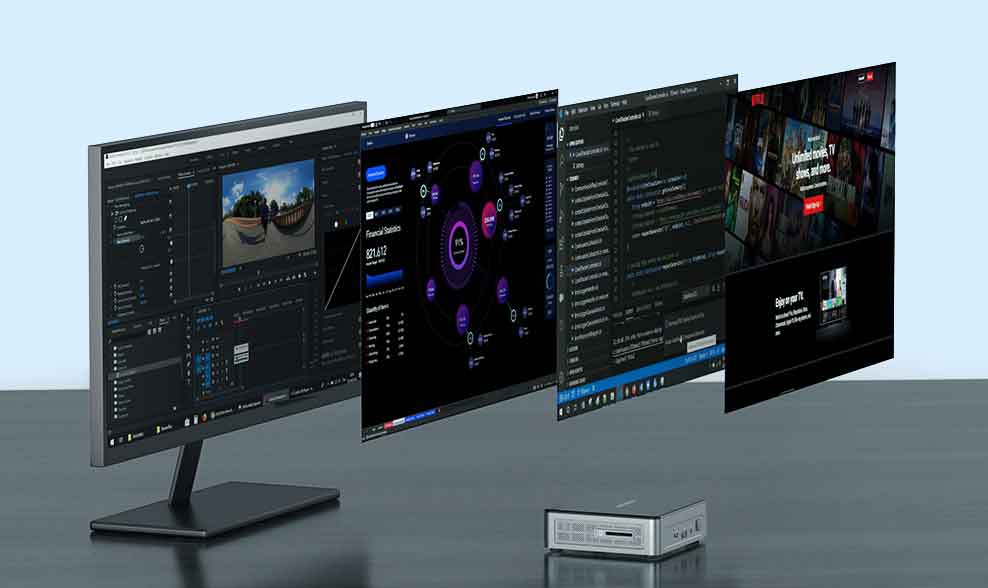One of the most confusing aspects of buying a new computer is choosing from the sheer number of options available, especially when it comes to the processor that will power your potential PC.
This is especially true when it comes to cheaper PCs. Two of the most popular CPU options for low-cost desktops are Intel's Celeron and Pentium Silver processors.
Which is the better option? We will examine this question in detail in today's article.
The basics
Intel's Celeron and Pentium Silver CPUs have many similarities. They are both included in the Jasper Lake product line, which is Intel's hallmark for its affordable and powerful processors.
Jasper Lake processors will provide enough processing power for the vast majority of users without breaking the bank, and tend to be "Goldilocks" chips for the average consumer: they offer the right balance of processing power, power consumption and heat output.
Both the Celeron and Pentium Silver families will be able to handle most home and office workloads. You can easily handle word processing, email, web browsing, and simple to complex spreadsheets. They even have enough power to handle some basic photo editing and casual gaming.
In short, Celeron and Pentium Silver CPUs are great options for Computers built to handle everyday tasks, and they are available at an affordable price.
Let's take a closer look at one option in each family. We compare that Intel Celeron N5095 with the Intel Pentium Silver N6000.
similarities
Celeron N5095 and Pentium Silver N6000 have a lot in common. Both are quad-core CPUs without hyperthreading.
Both have 1.5MB L2 cache and 4MB L3 cache. Both are manufactured on the 10nm Tremont architecture. Both support up to 16 GB of DDR4 or LPDDR4x RAM at 2933 MHz in dual channel. Both are capable of outputting true 4K video (4096 x 2160) at 60Hz. The list goes on.
In summary, the Celeron N5095 and Pentium Silver N6000 share many of the same features that most consumers care about. Both options are enough to handle common workloads and can even handle heavier tasks like streaming media.
However, there are two key differences between the Celeron N5095 and the Pentium Silver N6000. Let's look at these now.
differences
The first big difference between the two Jasper Lake CPUs is one of the defining characteristics of any processor: the clock speed. The Pentium Silver N6000 has a base clock of 1.1 GHz with a boost clock of up to 3.3 GHz. The Celeron N5095 has a base clock of 2 GHz and can boost up to 2.9 GHz.
While the N6000 appears to be the faster of the two chips at first glance, there is a caveat: each CPU's advertised boost clock speeds can only be achieved on a single core. Since multi-core workloads don't benefit as much from high single-core boosts, there are some nuances here.
It should also be noted that the N6000 has a significantly lower base clock than the N5095 (1.1GHz vs. 2GHz). This means that if thermal limits are reached and the CPU is forced to retreat, the N6000 will have to go significantly further down in terms of throttling.
What we should expect is that the N6000 comes out ahead in short single-threaded tests, but struggles to keep up in longer runs or multi-core dependent workloads. To give a little spoiler, that's exactly what the benchmarks confirm.
The other main difference between the two silicon options is their TDP or thermal design profiles. TDP essentially indicates how much power a CPU can draw and is a relative indicator of heat output and power consumption. In general, a higher TDP can mean higher performance at the expense of higher thermal performance.
The N6000 is designed as a “low-power processor”. As a consequence, it has a fairly low TDP of 6 watts. This means we should expect the N6000 to hit its thermal limits at just 6 watts, which isn't a lot of headroom. At this point it is likely that the CPU will back off to stay within its TDP.
The N6000 is designed as a low-power processor. As a result, it has a fairly low TDP of 6 watts. This means we should expect the N6000 to hit its thermal limits at just 6 watts, which isn't a lot of headroom. At this point it is likely that the CPU will back off to stay within its TDP.
The biggest downside to the N5095 is that it requires a proper cooling system to really get going. Passively cooled machines will have a hard time taking full advantage of the N5095.
Benchmarks
So let's look back at our original question: which CPU is better? One of the best ways to compare the performance of two processors is to run benchmarks and compare their performance in these tests.
If you look at the benchmarks from Notebookcheck.net, the Pentium Silver N6000 and Celeron N5095 are on par in most tests. However, there are some important conclusions that can be drawn from our analysis.
For one thing, the N6000 appears to be about 10 % faster in single-core benchmarks like Cinebench R23 and Geekbench 5.0. However, the Celeron N5095 is significantly faster in multi-core benchmarks, routinely performing 10-25 % better than the N6000.
As we mentioned above, this is likely due to the N5095's higher TDP, which allows all cores to operate at higher clock speeds and a higher base clock for longer periods of time.


On average, the N5095 outperforms the N6000 by 10%.
Conclusion
So which CPU is better? When it comes to overall performance, the Intel Celeron N5095 is the better option. It offers superior multicore and (surprisingly) graphics performance.
However, we have one final note. This overall better performance comes at the expense of higher heating output and higher energy consumption. If power consumption is a concern for you, this is something you should seriously consider. Maybe one would be Small form factor PC and low power consumption is a good choice.
If you're looking for a solid Intel Celeron N5095 computer that won't break the bank, check out the GEEKOM MiniAir 11. This fits almost anywhere, at an affordable price.






